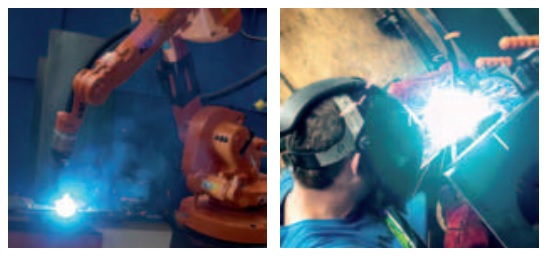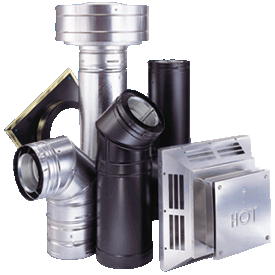We use cookies to make your experience better. To comply with the new e-Privacy directive, we need to ask for your consent to set the cookies. Learn more.
Materials
On the face of it, it doesn’t look like much of a difference between the different makes of stoves. However, each manufacturer has carefully chosen the best materials that will bring out the best of the fire.
Most premium stoves are made from Cast Iron. Some of the oldest manufacturers started out using Cast Iron as it was strong, projected heat as well as keeping it and it could be cast into many different shapes and styles.
All stoves expand as they get hot, which can cause warping. However, cast iron transfers heat very slowly, which makes it well-suited to changing temperatures, so a cast-iron stove doesn’t twist or skew when it heats up.
Manufacturers don’t weld thier stoves (because that would weaken them). They bind them with ceramic string and bolt them together with screws, so the stove will always have a perfect seal.
Cast iron is better able to distribute heat than sheet iron, so the heat from a cast-iron stove always feels comfortable when you’re near it
Cast iron is very resistant to burn-thro ugh, so the walls of the stove won’t be damaged by the heat.
ugh, so the walls of the stove won’t be damaged by the heat.
In the 21st Century, the advances in the production of plate steel meant the newer types of stoves could be made cheaply and quickly whilst, still conforming to up-to-date safety standards (EN 13240:2001 to name one).
Steel bodied stoves heat up quicker than cast iron stoves and are still very strong, often welded inside and outside to give extra strength.
Whilst each material has its pros and cons, most modern stoves now have a blend of both materials. Mixing the strength and shine of the steel body with the heavier cast iron door to create a better seal around the door frame.
As well as the stove itself, you also have to consider the flue materials needed so that the fire burns efficiently. Chimney cowls and flue pipes in particular are often over looked.
Chimney cowls play a huge part in reducing downdraught issues for woodburners. Chimney cowls or wind directional caps rotate to align with the wind and prevent back draft of smoke and wind coming back down the chimney. Often made from stainless steel, they are manufactured to withstand high levels of heat.
There are a wide variety of chimney cowl designs and the right one to choose is a matter of personal taste - however, bird guard, rain guard,

multipurpose and anti-downdraught chimney cowls are all recommended. A selection of Cowls can be seen in our Cowl Section.
A stove flue pipe can be single or double skinned and made of stainless steel, and the single skin pipe is often enamelled. Woodburners work more efficiently when the chimney has been lined. Quality grade stainless steel flue pipes and multifuel flexible liners are resistant to the corrosive elements in a chimney and a stove flue pipe and liner will usually come with a ten year warranty and should a fire break out can withhold heat of up to 1000 Degrees for up to 30 minutes. A twinwall insulated stove pipe can be used with woodburners and also with multi fuel stoves when no chimney is present or a combustible material is close to the fire. Installation guides can be seen in the Installation Guide section where as all our flue pipes can be seen in our flue section.